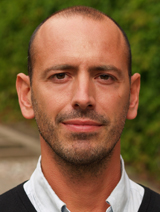This is how runaway health care costs will be stopped
Statistics show that society’s costs for health care over the past 10 years have increased faster than both GNP and salary levels. The new technology which will contribute to the lowering of costs has however, too often been developed too far away from health care settings, and therefore does not solve its actual needs. But doctors and researchers are unanimous, there are ways of dealing with the problems, among other things by bridging the gap between the hospitals and technical competence.
“Everybody is in agreement that the costs are increasing far too quickly. Improved use of medical technology provides one possibility to slow down and deal with escalating costs. The correct utilisation of technology can make healthcare both more efficient and cheaper,” says Peter Aspelin, doctor and chairman of the Swedish Medical Society.
One difficulty is to develop technology that is relevant for the actual needs health care has. One way of dealing with this is by adopting a multi-professional approach. If engineers and medical technicians together can define problems and bottlenecks, they may be able to provide recommendations for new relevant solutions.
“I look into my own area of operations and we receive technology that we have not requested, we do not receive answers to the questions we have asked,” says Peter Aspelin.

In order to overcome the problems associated with cost efficiencies, what is needed is both the introduction of new medical technology and innovative organisational changes. This can be achieved by making changes at educational level and the establishment of a new initiative which is called Clinical Innovation Fellowship. The management of KTH, KI, SLL and Karolinska University Hospital all support this initiative. Each year, new teams are created which are sent out to the various hospitals.
Bertil Guve, research leader at the Centre for Technology in Medicine and Health at the School of Technology and Health with KTH, KI and Stockholm County Council as principles, are responsible for the Fellowship initiative. Bertil says that there are many advantages with this.
“Innovations that meet real needs in healthcare often require different types of skills. In the Fellows teams, both technical, medicinal and management skills will be mixed. The teams are then sent out to clinics where they, over a period of two months, identify actual needs and possibilities in healthcare,” says Bertil Guve.
In addition, there are many new medical solutions available today, but it is a complicated process to reach out to the clinics that can make best use of them.
“What we want to do is to create a bridge between the clinics and the external skills available within technology, medicine and management. This new initiative will also provide healthcare with a further dimension in society - as an engine for innovation, says Bertil Guve.
The model for the Clinical Innovation Fellowship is at Stanford University where a similar programme has been carried on with considerable success since 2003. The School of Technology and Health is alone in Europe in its cooperation with Stanford Biodesign Fellowship. The programme will start in the autumn 2010, and the application period will last until 15 March.
For more information, see www.ctmh.se or contact Bertil Guve at 08 - 790 97 35 alternatively guve@kth.se.
Peter Larsson

